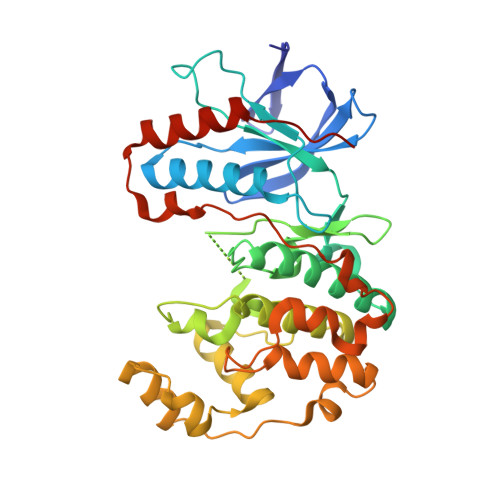Dibenzosuberones as p38 mitogen-activated protein kinase inhibitors with low ATP competitiveness and outstanding whole blood activity.
Fischer, S., Wentsch, H.K., Mayer-Wrangowski, S.C., Zimmermann, M., Bauer, S.M., Storch, K., Niess, R., Koeberle, S.C., Grutter, C., Boeckler, F.M., Rauh, D., Laufer, S.A.(2013) J Med Chem 56: 241-253
- PubMed: 23270382
- DOI: https://doi.org/10.1021/jm301539x
- Primary Citation of Related Structures:
3UVQ - PubMed Abstract:
p38α mitogen-activated protein (MAP) kinase is a main target in drug research concerning inflammatory diseases. Nevertheless, no inhibitor of p38α MAP kinase has been introduced to the market. This might be attributed to the fact that there is no inhibitor which combines outstanding activity in biological systems and selectivity. Herein an approach to the development of such inhibitors on the basis of the highly selective molecular probe Skepinone-L is described. Introduction of a "deep pocket" moiety addressing the DFG motif led to an increased activity of the compounds. Hydrophilic moieties, addressing the solvent-exposed area adjacent to hydrophilic region II, conserved a high activity of the compounds in a whole blood assay. Combined with their outstanding selectivity and low ATP competitiveness, these inhibitors are very interesting candidates for use in biological systems and in therapy.
Organizational Affiliation:
Institute of Pharmacy, University of Tübingen , Auf der Morgenstelle 8, D-72076 Tübingen, Germany.
















